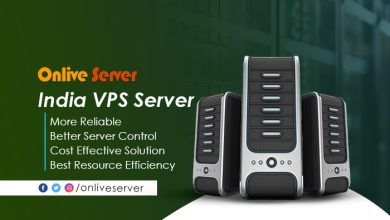How to make WordPress website more secure?

Web site owners mostly worry about the cyber threats in the technological world. Similarly, web site developer worries about their platform of creation of web site therefore WordPress Security. As WordPress is an open source platform it is more liable to get the attacks. However WordPress website are more secure than other non WordPress created web sites.
As WordPress is the most used platform for web site development a developer should make sure to install all the necessary security steps to it.
Different websites are made with different techniques and hence can be attacked by various other vulnerabilities.
Installing essential security plugins may help to get the site more secure than before.
In this blog we will discuss about How to make WordPress web site more secure?
Select a Good Host
Hosting providers plays a major role in maintain security so work only with the good hosting provider who ensures high security and reliability.
All the hosting providers guarantees the features and benefits of selecting them but there are some possibilities that these hosting providers step back from the promises they made if anything goes wrong.
Check out the hosting user experience visit reviewing sites to select the best hosting provider for WordPress. Choose the one who are good in marinating security, reliability and speed etc.

Update your WordPress to Latest Version
WordPress is a software which should be used in an updated form only. This is because there are undiscovered vulnerabilities which are discovered and fixed and the update version is launched.
Most of the people neglect this basic factor of security which results in losses. Just make a good site backup before installing anything.
Remove unwanted plugins
Similar to the WordPress its plugins also suffer from many kinds of vulnerabilities that as a developer you use.
Moreover, we can say WordPress works with plugins to provide more functionality. To reduce the possibilities of vulnerabilities, remove the plugins which you do not use.
Check out the remaining plugins and look out for their updates also figure out for how long a plugin wasn’t updated and the reason of it.
If the plugin is not developed or updated for a longer time, they are more to get security issues.
Reduce Permissions
We all know about the brute force attacks. They are the most common way to gain unauthorized access by the hackers. To secure you from these types of common attacks is to check the user permission.
Note down the accounts having administrator access. Allot every account to the lowest permission level to prevent in gaining the administrator access.
If you thing a user do not require the access remove them immediately and secure all the accounts by using two factor authentication system.
Secure the wp-config.php file
The most important file of WordPress wp-config.php contains sensitive information about WordPress installation and protecting this file is crucial.
Hackers looks after gaining the access to this file to breach the data security but after securing this file it becomes inaccessible for hacker to breach the data stored in it and helps in protecting the data.
For this just move wp-config.php to high level than root directory.
Control File Editing
The control allows a user to perform various activities. A user having administrator access can edit the files which are part of WordPress installation.
If you restrict the file editing to specific users and disallow it for any other users only specific person can mold and modify it. It also includes plugins and theme. Add wp-config.php file.
Disable directory listing .htaccess
The directory part of website needs index.html file in it in case you do not mention the file your visitors can look for everything in the directory.
To prevent your data to access by anyone you can add .htaccess file in your code.
Remove Hotlinking
Hotlinking is generally taking your website photo and using it on another website by stealing your server bandwidth. For example, if you want to show a picture on your post you have to buy it or take the permission to use it.
In case you fail to do so legal action can mark your way. By pulling the image URL you can use it post but you really don’t know how long it will be there on the other server.
This can be for your website too. In order to secure your site from hot linking uses various security plugins.
Website Lockdown
Failed login attempts can cause a website to lock for you and they are much more effective in preventing the brute force attacks.
If a person types wrong passwords multiple times the site gets automatically locked and admin gets a notification of unauthorized access.
For doing this you can use I Themes Security plugins it has various features to offer. You can also ban or blacklist IP’s for such attackers.
Two Factor Authentication
A good security step involves two factor authentications on log in page. It is just providing login credentials for two unique components.
It’s in the hand of owner to select these two components it can be a password and a secret question or more.
By this it protects and maintains the secrecy and only an authorized person can log into your site. Google authenticator plugin can be grateful tool for you regarding this.
Use email to log in
Emails are the safest and the most known thing for log ins. By default, WordPress uses email to make someone log in.
having an email id login than that of a user name is consider more secure. This is because anyone can guess usernames while on the other hand email ids are long and harder than remembering a username. An email id is valid proof of authorized user for WordPress.
Conclusion
In conclusion, security is the essential step for website owners and developers to consider. In order to protect major vulnerabilities and threats you should take preventive measures towards right direction.
So far, we have discussed above mentioned points of installing security for WordPress sites to prevent hackers for gaining unauthorized access.
However, taking care of security is essential but you should also focus on website performance.





